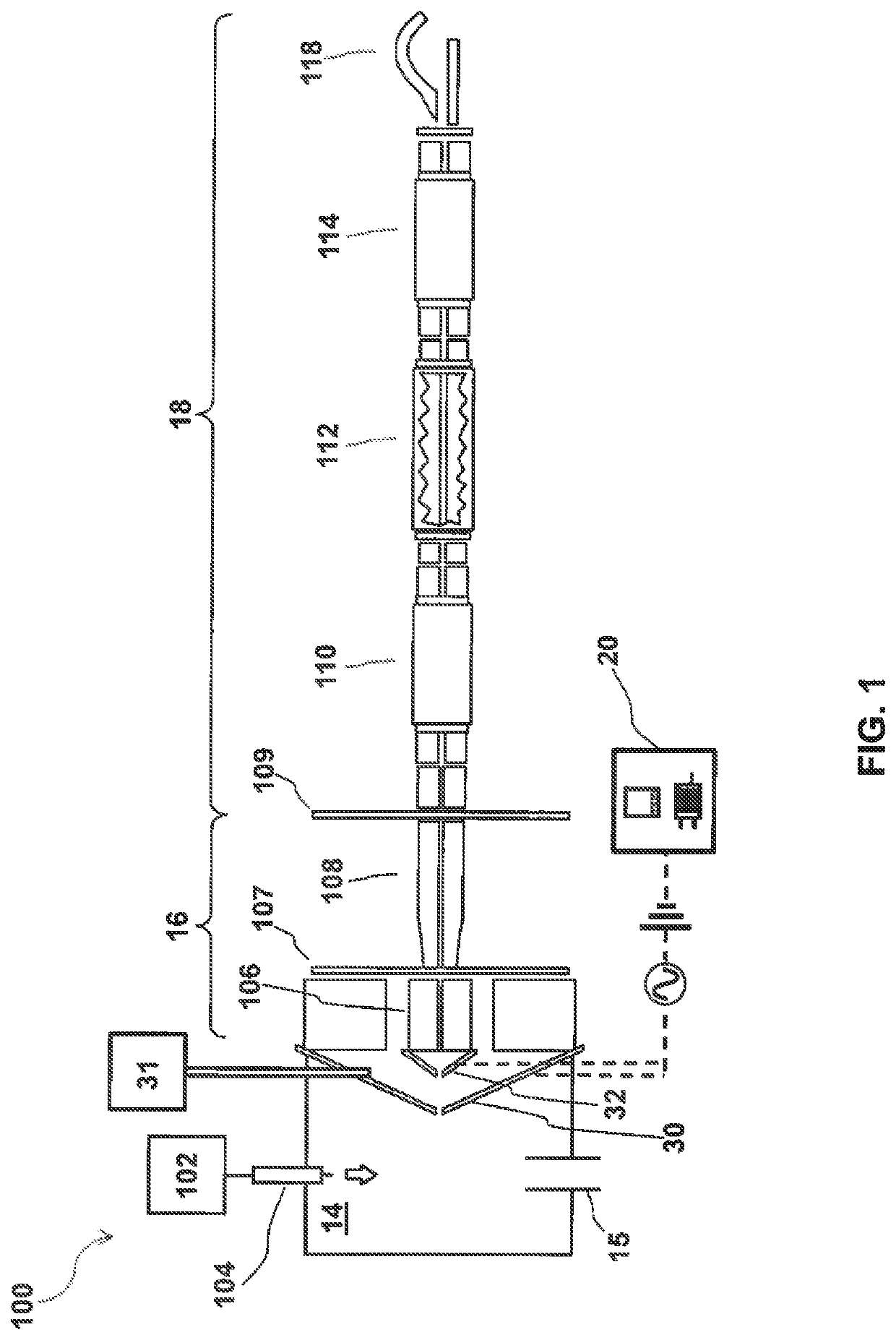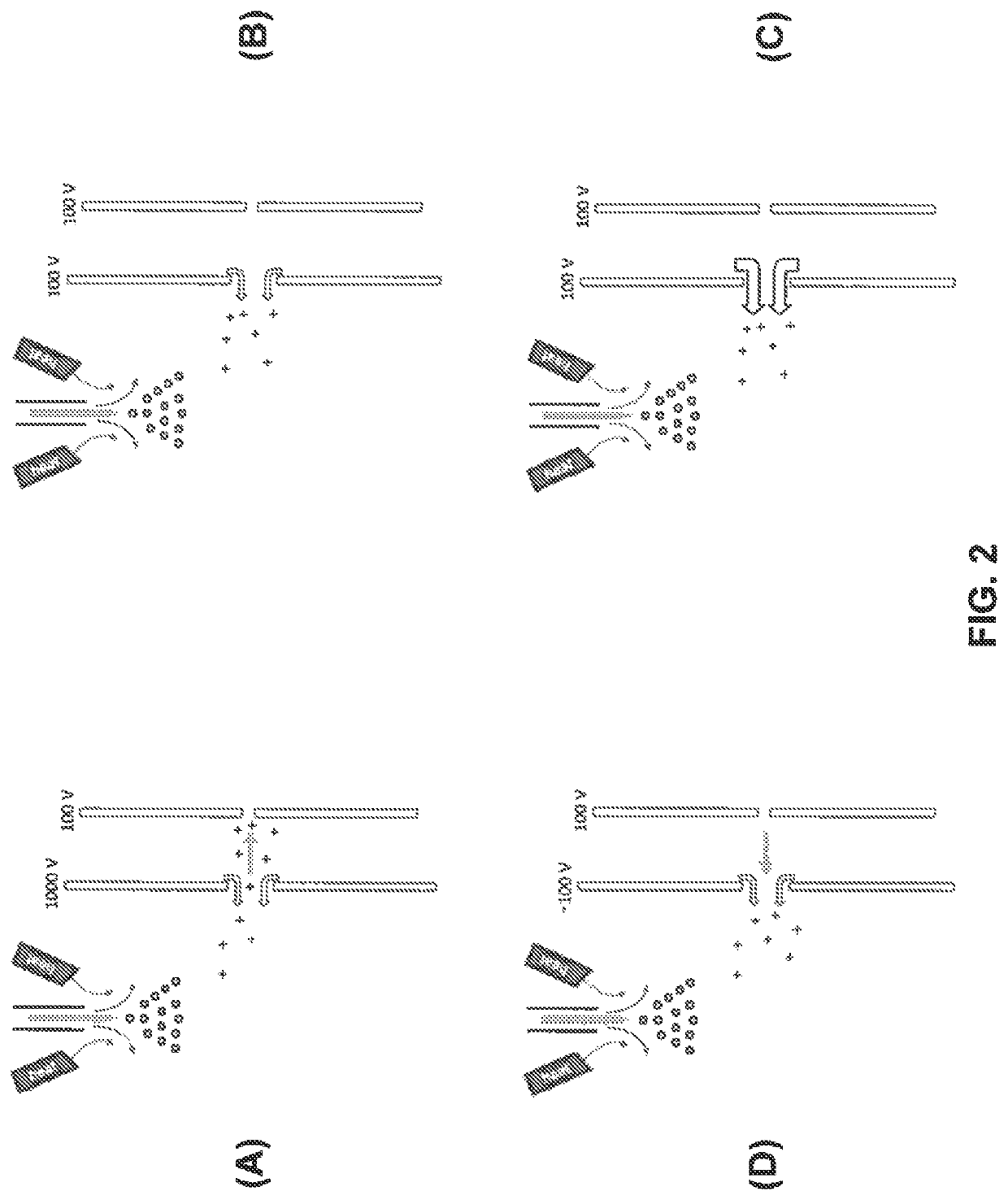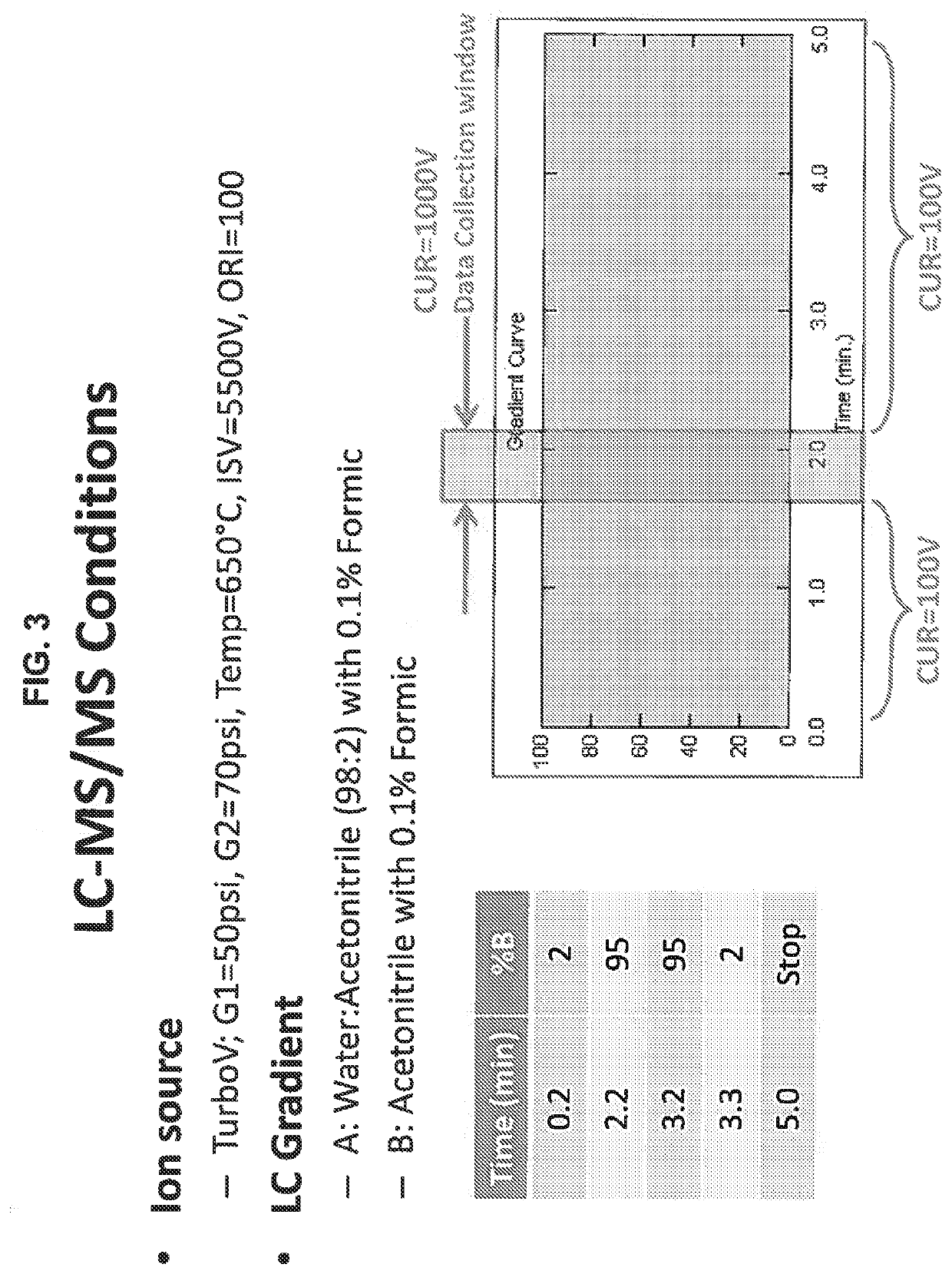Methods and systems for controlling ion contamination
a technology of ion contamination and methods, applied in the field of mass spectrometry, can solve the problems of increasing costs or reducing throughput, interfering with mass spectrometric analysis, and accelerating the contamination of mass analyzers, and achieves the effects of reducing the number of ion sources
- Summary
- Abstract
- Description
- Claims
- Application Information
AI Technical Summary
Benefits of technology
Problems solved by technology
Method used
Image
Examples
example 1
[0046]With reference now to FIGS. 4A-C, this infusion experiment demonstrates a substantial reduction in the number of ions transmitted into the high vacuum components of a mass spectrometer system operated in accordance with various aspects of the present teachings. A sample of reserpine 10 pg / μL was infused on a QTRAP® 6500 Q-q-Q mass spectrometer modified in accordance with the present teachings in which the orifice plate voltage was set to 100 V DC and the curtain plate was adjusted between a value of 1000 V DC and 100 V DC at various points during the infusion. FIG. 4A depicts the total ion current (TIC) detected at each time point over the course of the infusion, with the curtain plate voltage being adjusted to 100 V DC at approximately the following times: 0.3-0.4 min; 0.8-1.1 min; 1.4-1.6 min; and 2.0-2.3 min. As seen in FIG. 4A, the modulation of the curtain plate voltage to the same potential as the orifice plate was effective to block substantially all of the charged spec...
PUM
| Property | Measurement | Unit |
|---|---|---|
| voltage | aaaaa | aaaaa |
| voltage | aaaaa | aaaaa |
| voltage | aaaaa | aaaaa |
Abstract
Description
Claims
Application Information
 Login to view more
Login to view more - R&D Engineer
- R&D Manager
- IP Professional
- Industry Leading Data Capabilities
- Powerful AI technology
- Patent DNA Extraction
Browse by: Latest US Patents, China's latest patents, Technical Efficacy Thesaurus, Application Domain, Technology Topic.
© 2024 PatSnap. All rights reserved.Legal|Privacy policy|Modern Slavery Act Transparency Statement|Sitemap



